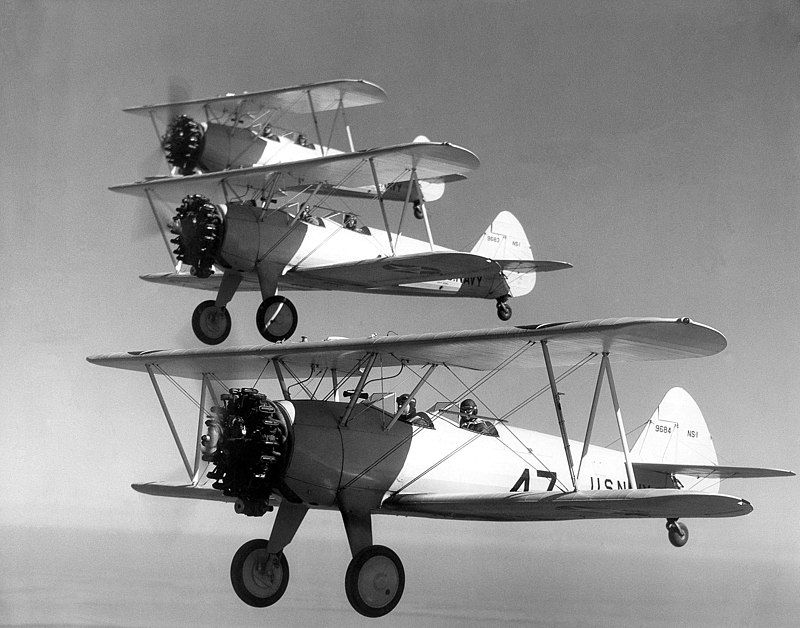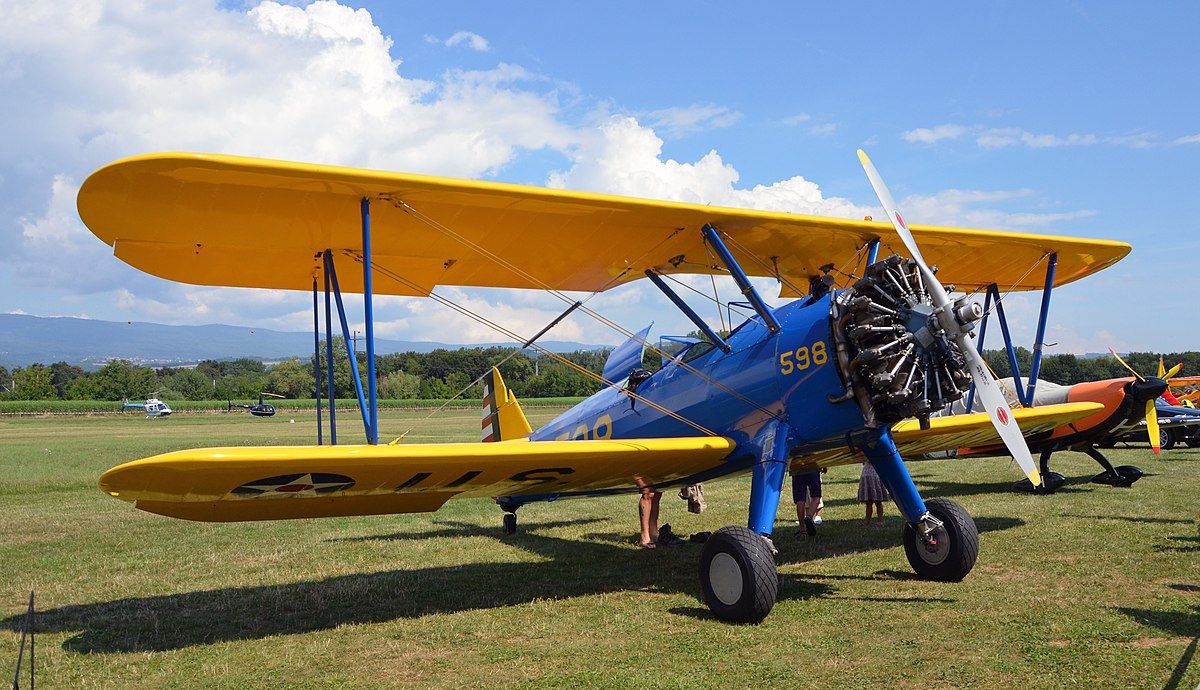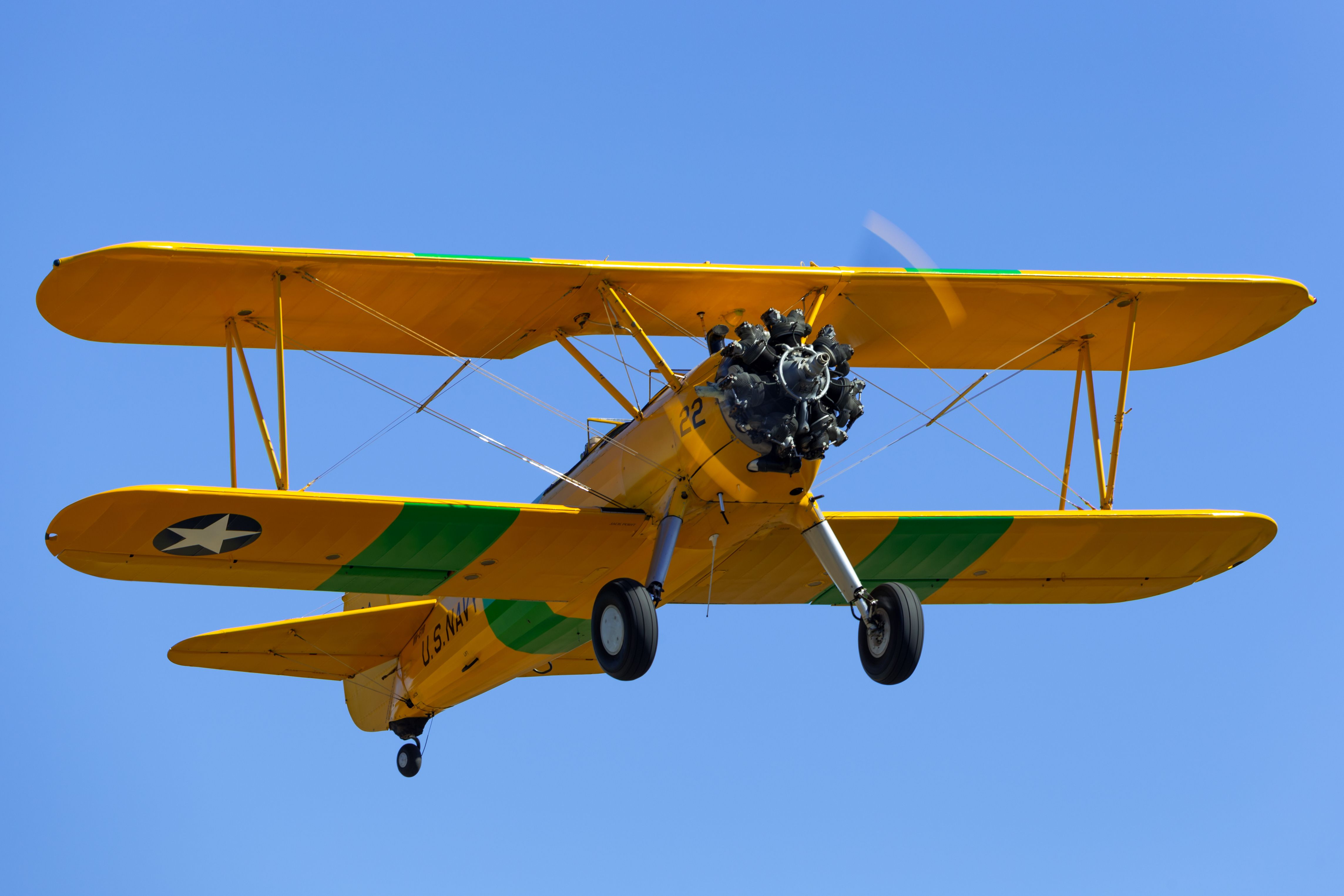The Boeing-Stearman Model 75, often referred to as the Stearman or Kaydet, is one of the most iconic bi-planes in aviation history. Used primarily as a military trainer during World War II
, this versatile aircraft played a significant role in training pilots for combat. Its robust design, reliability, and ability to endure rigorous training exercises made it a favorite among instructors and students alike.
Looking back in time
The Stearman Model 75 was initially developed in the 1930s by the Stearman Aircraft Corporation, which became a subsidiary of ![]() Boeing
Boeing
in 1934. Designed as a biplane with an open cockpit, the Stearman quickly gained a reputation as an ideal training aircraft due to its simplicity, ruggedness, and forgiving flight characteristics.
By the outbreak of World War II, the US Army Air Corps (and later, the US Army Air Forces and US Navy) were in dire need of a reliable aircraft to train thousands of new pilots. The Stearman Model 75 fit the bill perfectly, leading to its mass production. More than 10,000 units were built between 1936 and 1945, making it one of the most widely used training aircraft during the war.
|
Time Period |
Milestone |
|
1934 |
Stearman Aircraft Corporation becomes a subsidiary of Boeing. |
|
1936 |
The Stearman Model 75 takes its first flight. |
|
1941–1945 |
During WWII, it becomes the primary trainer for both the U.S. Army Air Forces and Navy. |
|
Post-WWII |
Many Stearman aircraft were sold to civilians and adapted for use as crop dusters, sports planes, and air show performers. |
Design features of the Boeing-Stearman Model 75
One of the key features of the Model 75 is its biplane configuration. The aircraft has two wings stacked on top of each other, which gives it excellent lift capabilities at low speeds, a feature that was crucial for training novice pilots.
Additionally, the Model 75 has a tandem open cockpit, meaning both the instructor and student sit in separate cockpits, one behind the other. This open cockpit design allowed for excellent visibility and direct communication between the trainer and the trainee.
The original Model 75 was powered by a Continental R-670 radial engine, which produced around 220 horsepower. This engine provided enough power for the aircraft to take off from short airstrips and perform basic aerobatic maneuvers. The biplane also featured a conventional fixed landing gear, which made it easier for new pilots to handle the aircraft on the ground.
The Model 75 bears the following specifications:
- Length: 24 feet, 10 inches (7.57 meters)
- Wingspan: 32 feet, 2 inches (9.81 meters)
- Maximum speed: 124 mph (200 km/h)
- Range: 505 miles (813 km)
- Service ceiling: 13,200 feet (4,023 meters)
Role in pilot training during World War II
The Boeing-Stearman Model 75 was an integral part of the Primary Flight Training phase in the US Army Air Forces and Navy pilot training programs during World War II. This first phase was designed to weed out unqualified pilots before they advanced to more complex aircraft.
It was used to introduce cadets to the basics of flight, including takeoff, landing, basic maneuvers, and emergency procedures. Its docile flight characteristics and stable design made it ideal for this purpose. After primary training in the Stearman, pilots moved on to more advanced trainers such as the North American T-6 Texan.
Model 75’s post-war legacy
After World War II, the Boeing-Stearman Model 75 found new life in civilian aviation. Thousands of surplus aircraft were sold to private buyers and converted for various uses.
According to Wings Over Kansas, many Stearmans were converted into crop dusters – thanks to their sturdy airframe and ability to fly low and slow over fields – while some pilots purchased Stearmans for personal use, as they provided an affordable way to own a historic aircraft with solid flight performance.
The Stearman’s aerobatic capabilities also made it a popular choice for airshow performers, where its biplane design and open cockpit evoke a sense of nostalgia for the golden age of aviation.
The Boeing-Stearman Model 75 today
Today, the Model 75 remains a beloved aircraft among collectors, performers at airshows
, and pilots who appreciate its timeless design and historical significance. It remains one of the most recognizable and celebrated biplanes in aviation history.
Photo: Ryan Fletcher | Shutterstock
The aircraft’s strong association with pilot training, combined with its post-war uses in agriculture, recreation, and airshows, ensures that the Stearman’s legacy will continue for years to come. The Boeing-Stearman Model 75’s role in shaping the future of military aviation, combined with its versatility in civilian life, cements its place as one of the most iconic aircraft ever produced.
From its early days as a military trainer to its continued presence in airshows and private collections, the Stearman’s legacy is undeniable. Whether you’re an aviation enthusiast, a history buff, or simply someone who appreciates classic aircraft, the Boeing-Stearman Model 75 is an enduring symbol of a bygone era in aviation history.




